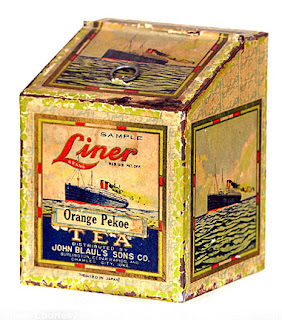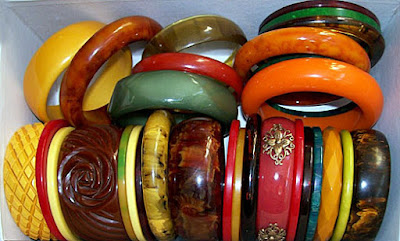 QUESTION: I’ve always loved playing board games. When I was a kid, my family would have game nights. Each member of my family take turns choosing the games we played. While we played more modern games, I’ve always been fascinated by antique board games. How did board games get their start? What were some of the more popular games in the 19th and early 20th centuries? If I were to collect old board games, which ones would be the best to collect?
QUESTION: I’ve always loved playing board games. When I was a kid, my family would have game nights. Each member of my family take turns choosing the games we played. While we played more modern games, I’ve always been fascinated by antique board games. How did board games get their start? What were some of the more popular games in the 19th and early 20th centuries? If I were to collect old board games, which ones would be the best to collect?
ANSWER: Collecting board games can be fun. The shear number of games produced during nearly 100 years of game production offers a wide variety of games to collect. Many people who collect games collect the ones they played as children. It’s a great place to start.
 People have been playing games since ancient Egypt. The Romans loved to bet and rolling dice was popular. By the Middle Ages, playing cards was all the rage. Games became more sophisticated by the 17th century, as backgammon caught on. The Industrial Revolution and the introduction of electricity enabled the middle class to have more free time and by the late 19th century, parlor games, especially board games. The reliable light source encouraged people to seek evening amusements.
People have been playing games since ancient Egypt. The Romans loved to bet and rolling dice was popular. By the Middle Ages, playing cards was all the rage. Games became more sophisticated by the 17th century, as backgammon caught on. The Industrial Revolution and the introduction of electricity enabled the middle class to have more free time and by the late 19th century, parlor games, especially board games. The reliable light source encouraged people to seek evening amusements.
 One of the most popular of these amusements was the game of checkers. While the more elite were more inclined to play chess, everyone else played checkers, often while sitting out on the porch on a summer’s eve or around the pot-bellied stove in the local country store in winter. While commercial manufacturers produced checkerboards, those that collectors love most are the handmade versions of light and dark wood inlaid in a contrasting pattern.
One of the most popular of these amusements was the game of checkers. While the more elite were more inclined to play chess, everyone else played checkers, often while sitting out on the porch on a summer’s eve or around the pot-bellied stove in the local country store in winter. While commercial manufacturers produced checkerboards, those that collectors love most are the handmade versions of light and dark wood inlaid in a contrasting pattern.
 Much the same can be said of backgammon and Parcheesi boards, some of which were made of glass with the board design painted in reverse on the back. Many of the game boards were beautiful works of art, with bold designs and bright colors, featuring fanciful characters or outrageous cartoons, often based on nursery rhymes, fairy tales or stories plucked from the headlines.
Much the same can be said of backgammon and Parcheesi boards, some of which were made of glass with the board design painted in reverse on the back. Many of the game boards were beautiful works of art, with bold designs and bright colors, featuring fanciful characters or outrageous cartoons, often based on nursery rhymes, fairy tales or stories plucked from the headlines.
The counters, playing pieces, that people used to play these games range from the plain wooden circles of checkers and backgammon to elaborately carved pieces of exotic woods, jade and other semiprecious stones, and ivory for chess.
Board games offer the greatest variety for collectors. Most board games involve a race to the finish between two or more players who move their pieces along a printed track at a rate determined by the throw of a pair of dice, the turn of a numbered spinner, or the selection of cards.
In the 16th century, the Italians played Goose, the earliest known board game. But it wasn’t until the 19th century that board games existed in greater numbers. From about 1870 to 1960, when watching television gained popularity, manufacturers produced thousands of board games for the market. Some didn’t quite make it out of the gate while others gained phenomenal success.
The Mansion of Happiness, a game with a religious theme, first appeared in 1843 and was still popular over 40 years later in the 1880s. Winning, based on the Puritan view that success could be achieved through Christian deeds and goodness, required players to advance by landing on spaces denoting virtues like piety and humility and move backward when landing on spaces like cruelty and ingratitude.
In 1860, The Checkered Game of Life rewarded players for mundane activities such as attending college, marrying, and getting rich. Daily life rather than eternal life became the focus of board games. The game was the first to focus on secular virtues rather than religious virtues, and sold 40,000 copies its first year.
By the 1880s, many games had a rags-to-riches theme. In Game of the District Messenger Boy, players are rewarded for landing on spots with attributes like accuracy and neatness and deducted for loitering.
 Most games originated in New York City, as it was the center of the board game industry. The Game of Playing Department Store from 1898 showed what a novel concept it was for Americans to do all their shopping under one roof. Round the World With Nellie Bly from 1890, illustrated the Victorian fascination with travel and exploration, while Rival Policeman from 1896 used as its base the real-life story of a time when New York had two competing police departments.
Most games originated in New York City, as it was the center of the board game industry. The Game of Playing Department Store from 1898 showed what a novel concept it was for Americans to do all their shopping under one roof. Round the World With Nellie Bly from 1890, illustrated the Victorian fascination with travel and exploration, while Rival Policeman from 1896 used as its base the real-life story of a time when New York had two competing police departments.
Board games tell a lot about the culture in the United States at different times in its history from the mid 19th century to the mid 20th century.
 Probably the all-time most popular game to this day is Monopoly. Originally conceived in the late 1890s under a different name as a game of the poor versus the rich, it was mostly a game with rules and game boards that players customized themselves. Sometimes they used a piece of oil cloth for the board and whatever little objects they could find for the game pieces. But it wasn’t until 1935 that Charles Darrow, a broke and out-of-work man in southeastern Pennsylvania, took the game idea, using various concepts created by players over time, and packaged it into a product that he sold through Wanamaker’s Department Store in Philadelphia. While many accounts claim Darrow as the inventor, he wasn’t. But he eventually sold the game to Parker Brothers, the largest producer of board games in America at the time, and the rest, as they say, is history.
Probably the all-time most popular game to this day is Monopoly. Originally conceived in the late 1890s under a different name as a game of the poor versus the rich, it was mostly a game with rules and game boards that players customized themselves. Sometimes they used a piece of oil cloth for the board and whatever little objects they could find for the game pieces. But it wasn’t until 1935 that Charles Darrow, a broke and out-of-work man in southeastern Pennsylvania, took the game idea, using various concepts created by players over time, and packaged it into a product that he sold through Wanamaker’s Department Store in Philadelphia. While many accounts claim Darrow as the inventor, he wasn’t. But he eventually sold the game to Parker Brothers, the largest producer of board games in America at the time, and the rest, as they say, is history.
 Collectors have a lot of reasons for collecting board games, but one of the main ones is the artistic and often complicated graphics which adorn the boards and box covers. Game manufacturers lithographed the graphics onto the boards in black and white, then carefully had low-paid young women hand tint them. But by the 1880s, chromolithography made it possible to produce multicolored boards. Some were faithful images of Victorian dress and customs while others were more abstract. In either case, the game’s box cover was what sold it. And even today, if a game’s box is lost or damaged, most collectors won’t purchase it. Ironically, the absence of game pieces, cards, dice, and spinners isn’t that important, though will detract from the game’s value.
Collectors have a lot of reasons for collecting board games, but one of the main ones is the artistic and often complicated graphics which adorn the boards and box covers. Game manufacturers lithographed the graphics onto the boards in black and white, then carefully had low-paid young women hand tint them. But by the 1880s, chromolithography made it possible to produce multicolored boards. Some were faithful images of Victorian dress and customs while others were more abstract. In either case, the game’s box cover was what sold it. And even today, if a game’s box is lost or damaged, most collectors won’t purchase it. Ironically, the absence of game pieces, cards, dice, and spinners isn’t that important, though will detract from the game’s value.
 Even though manufacturers produced thousands of games, not all that many survive in good condition and even fewer in pristine condition because nearly makers used cardboard and paper to produce them. Board game and moisture are a bad combination.
Even though manufacturers produced thousands of games, not all that many survive in good condition and even fewer in pristine condition because nearly makers used cardboard and paper to produce them. Board game and moisture are a bad combination.
From 1880 to 1950, three companies dominated the market for board games. One of the earliest was W & S.B. Ives Company of Salem, Massachusetts. Ives developed the game with the longest name—Pope and Pagan, or the Missionary Campaign, or the Siege of the Stronghold of Satan by the Christian Army. Like many other late 19th-century board games, Pope and Pagan had a religious theme. Board games of the time were meant to be educational and not just for amusement. Some taught geography or simple bookkeeping or social values, such as honesty and a respect for hard work.
Two other major board game producers were McLoughlin Brothers of New York City and Parker Brothers of Salem, Massachusetts.
To read more articles on antiques, please visit the Antiques Articles section of my Web site. And to stay up to the minute on antiques and collectibles, please join the over 30,000 readers by following my free online magazine, #TheAntiquesAlmanac. Learn more about "folk art" in the 2023 Winter Edition, online now. And to read daily posts about unique objects from the past and their histories, like the #Antiques and More Collection on Facebook.























































